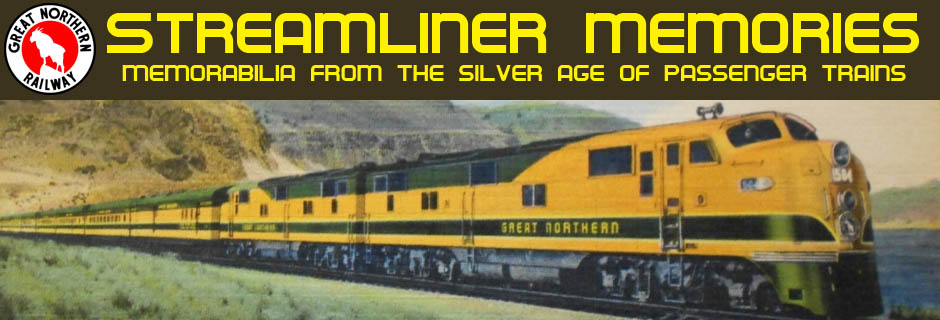In another decade or so, the Rock Island would become known as “one railroad too many” as it was competing against the Burlington, Milwaukee, and North Western. But in the 1950s it was still making profits and was pleased to advertise everything from the Golden State to the Jet Rocket in this timetable.
 Click image to download a 23.9-MB PDF of this timetable from the Ellery Goode collection.
Click image to download a 23.9-MB PDF of this timetable from the Ellery Goode collection.
In between were the the Corn Belt Rocket, the Kansas City Rocket, Rocky Mountain Rocket, Twin Star Rocket, and Zephyr Rocket. The extra fare Golden State was paired with the secondary Imperial.
The timetable contains a few disturbing signs of decline. The westbound Cherokee, which was once a Memphis connection to California, required a 3-1/4-hour layover in Tucumcari waiting for the Imperial. The secondary train on the Memphis route, the Choctaw Rocket, was a rail Diesel car that traveled an uncomfortable 762 miles before petering out in Amarillo.
In Rock Island’s defense, problems on the Golden State route may have been more the fault of Southern Pacific than Rock Island. SP’s decision to cancel the Golden State Rocket (which was probably provoked by proposed federal speed limits) left the trains on that route uncompetitive with Santa Fe and Union Pacific limiteds.
In addition to Chicago commuter trains, Rock Island still had plenty of unnamed trains connecting such cities as Eldon and Kansas City, Omaha and Goodland, Kansas City and Belleville, and Chicago and Des Moines. All these trains meant that this 36-page timetable had lots of schedules and very little fluff.

It wasn’t just the 79 MPH limitation. After WW2, Ted Mercier’s right hand man Don Russell remarked that SP should “energetically” go after coach business, while being cautious with regard to expanding sleeping car operations. He observed that “in any forecast that can be made, we can always use coach equipment” and in fact he was an enthusiastic supporter (at first) of the Shasta Daylight.
It’s also worth noting that SP viewed the Golden State’s true competition as the Chief, both operating on identical 45 hour schedules until 1954, when Santa Fe added coaches to Nos. 19 & 20, at the same time tightening it’s schedule to match Nos. 17 & 18, with a one night out schedule to L.A. Impressive.